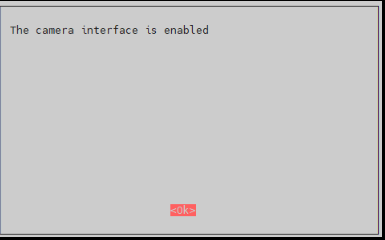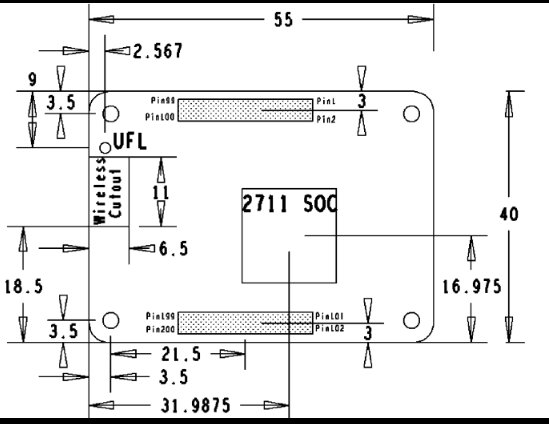Difference between revisions of "CM4-NANO-B"
| Line 208: | Line 208: | ||
*[https://www.waveshare.net/w/upload/2/23/CM4-NANO-B-STEP.zip CM4-NANO-B STEP]<br> | *[https://www.waveshare.net/w/upload/2/23/CM4-NANO-B-STEP.zip CM4-NANO-B STEP]<br> | ||
*[https://www.printables.com/model/212502-modular-enclosure-compatible-w-cm4-nano-b-base-boa STL for 3D print case (shared by Markus)] | *[https://www.printables.com/model/212502-modular-enclosure-compatible-w-cm4-nano-b-base-boa STL for 3D print case (shared by Markus)] | ||
| + | *[https://www.printables.com/de/model/325480-case-for-raspberry-pi-cm4-on-waveshare-nanobase-b 3D pint case (shared by Stefan)] | ||
===Software=== | ===Software=== | ||
Revision as of 07:58, 29 November 2022
| ||
Overview
Introduction
CM4-NANO-B (Raspberry Pi CM4 Ultra Mini Expansion Board Type B) is a baseboard that can be used with Raspberry Pi Compute Module 4. Although it is tiny, it can bring out the interface of Raspberry Pi Compute Module 4.
Precautions
1. DO NOT hot-plug any devices except the USB and HDMI.
2. As the module does not have any protection, please do not short-circuit the power supply.
3. The USB Type-C interface can be used as a power supply or as a USB SLAVE interface to program the image.
4. In order to ensure the normal power supply of the CM4, please do not connect other devices when using the USB Type-C interface to program the image.
5. Providing 5V 2A for CM4 to ensure that it is in normal use. Otherwise, there may be problems such as automatic shutdown, frequency reduction and so on.
6. The USB2.0, CSI, DSI and Audio interfaces are disabled by default and need to be enabled by the user.
7. The user key is connected to GPIO21 and pulled up to GPIO_VREF by R16 (10K). When the key is not pressed, GPIO21 is pulled high by default; when the key is pressed, the level of GPIO21 will be pulled down.
Dimension
CM4-NANO-B
Compute_Module 4
Onboard Resources
| Label | Name | Description |
| 1 | CM4 socket | suitable for all variants of Compute Module 4 |
| 2 | Micro SD card interface | For inserting a Micro SD card with the system, only for Lite version |
| 3 | 40PIN GPIO interface | Easy access to various HAT modules |
| 4 | Ethernet port | RJ45 Gigabit Ethernet port, support 10 / 100 / 1000M network access |
| 5 | Power supply/burning interface | 5V/2A power supply, can also be used as eMMC programming interface |
| 6 | Audio Interface | 3.5mm audio interface |
| 7 | User button | User can program key function, connect to GPIO21 |
| 8 | USB2.0 | Indicates the working status of the Raspberry Pi |
| 9 | CAM interface | MIPI CSI camera interface, connect with CM4 CSI0 interface |
| 10 | DSI | MIPI DSI display interface, connect with CM4 DSI1 interface |
| 11 | DC buck circuit | DC buck circuit to power 3.3V for DSI, CSI and GPIO |
| 12 | MINI HDMI | HDMI interface, support 4K 30fps output |
| 13 | BOOT | ON: Switch the USB to type C interface, and enter the download mode when powered on (configured as a large-capacity disk through rpi boot)
OFF: Switch the USB to TYPE A interface, it will not enter the download when powered on (start from eMMC or SD card) |
Usage Introduction
Writing Image
- According to the version of CM4 you are using, the image programming can be divided into two versions: EMMC and LITE. Please choose the version below according to your CM4 to watch.
- Write Image for Compute Module Boards eMMC version
- Write Image for Compute Module Boards Lite version
USB2.0
USB enable configuration
- The USB port is disabled by default on the CM4 to save power.
- It is recommended to directly open the config.txt file in the boot drive letter after the programming is completed, and add the following content:
dtoverlay=dwc2,dr_mode=host
- After saving the file, start the machine according to the normal process
USB-OTG Mode
- If you use the latest Raspberry Pi OS (image after October 30, 2021) and USB2.0 is in OTG mode by default, CM4 will report an error.
config failed, hub doesn't have any ports! (err -19)
- However, USB can still be used. If you want to remove this error, remove otg_mode=1 in [cm4] of config.txt, and add dtoverlay=dwc2, dr_mode=host (USB cannot be recognized without adding it).
CSI and DSI
Configuration
- Due to CSI and DSI are disabled by default, we need to load the device tree to enable, and I2C-10, I2C-11, and I2C-0, will be occupied when using the CSI camera and DSI screen.
- Enter the following command:
sudo apt-get install p7zip-full wget https://www.waveshare.com/w/upload/4/41/CM4_dt_blob.7z 7z x CM4_dt_blob.7z -O./CM4_dt_blob sudo chmod 777 -R CM4_dt_blob cd CM4_dt_blob/ # if using two cameras and DSI1, execute sudo dtc -I dts -O dtb -o /boot/dt-blob.bin dt-blob-disp1-double_cam.dts #When using any DSI, HDMI1 has no image output, even if you do not connect the DSI screen, as long as the corresponding file is compiled, then HDMI1 will not output. #If you need to restore, delete the corresponding dt-blob.bin: sudo rm -rf /boot/dt-blob.bin # After execution, turn off the power and restart the CM4.
Enable CSI Camera
- Make sure to connect the CSI camera and DSI screen in a power-off state, otherwise the equipment may be damaged.
- In addition to modifying the device tree, the CSI camera also needs to be set to enable the camera function.
Old version (buster)
1. Execute the following command to enter the Raspberry Pi configuration.
sudo raspi-config
2. Choose Interfacing Options and enter.

3.Choose Camera

4.Choose to open the camera interface.

5.The system prompts as follows:

6.Back to the main interface, select Finish.

7.Reboot the system

- Test the camera function:
raspistill -o image.jpg
- Test the recording function:
raspivid -o video.h264 -t 10000
- Where -t 10000 means recording for 10 seconds, users can adjust according to their own needs.
- Please refer to CSI.
New version (bullseye)
1. Execute the following command to enter the Raspberry Pi configuration.
sudo raspi-config
2. Block or delete the automatic camera detection sentence.

3. Add the driver of the camera you use, here I take IMX219 as an example, and connect it to CAM0, and attach the adapter.

| Model | CAM0 Set Sentence | CAM1 Set Sentence |
|---|---|---|
| OV9281 | dtoverlay=ov9281,cam0 | dtoverlay=ov9281,cam1 |
| IMX290/IMX327 | dtoverlay=imx290,clock-frequency=37125000,cam0 | dtoverlay=imx290,clock-frequency=37125000,cam1 |
| IMX378 | dtoverlay=imx378,cam0 | dtoverlay=imx378,cam1 |
| IMX219 | dtoverlay=imx219,cam0 | dtoverlay=imx219,cam1 |
| IMX477 | dtoverlay=imx477,cam0 | dtoverlay=imx477,cam1 |
- CM4-NANO- only uses CAM0, so just add a sentence "dtoverlay=imx219,cam0".
4. Ctrl+o to save the file and press Enter
![]()
5. Ctrl+x to exit the editor.
6. Reboot the CM4.
sudo reboot
7. Enter the camera detection command, you can see that the camera has been checked by now.
libcamera-hello --list-cameras

8. Display the camera screen to the desktop.
libcamera-hello -t
7. Taking photos.
libcamera-jpeg -o test.jpg
8. Record a video of 10s.
libcamera-vid -t 10000 -o test.h264
Audio Interface
- The Audio of this device uses GPIO. If you use GPIO18 and GPIO19, you need to enable via the configuration file.
1. Edit config.txt.
sudo nano /boot/config.txt
2.Add the following content at the bottom.
dtparam=audio=on dtoverlay=audremap,pins_18_19
3.Reboot the CM4
sudo reboot
4.Enter to the graphical interface, right-click the volume icon, and select AV Jack.

- PS: When switching to Audio interface, the audio output of HDMI will stop.
Resources
Datasheet
Schematic
3D Graphics
Software
Support
If you require technical support, please go to the Support page and open a ticket.





